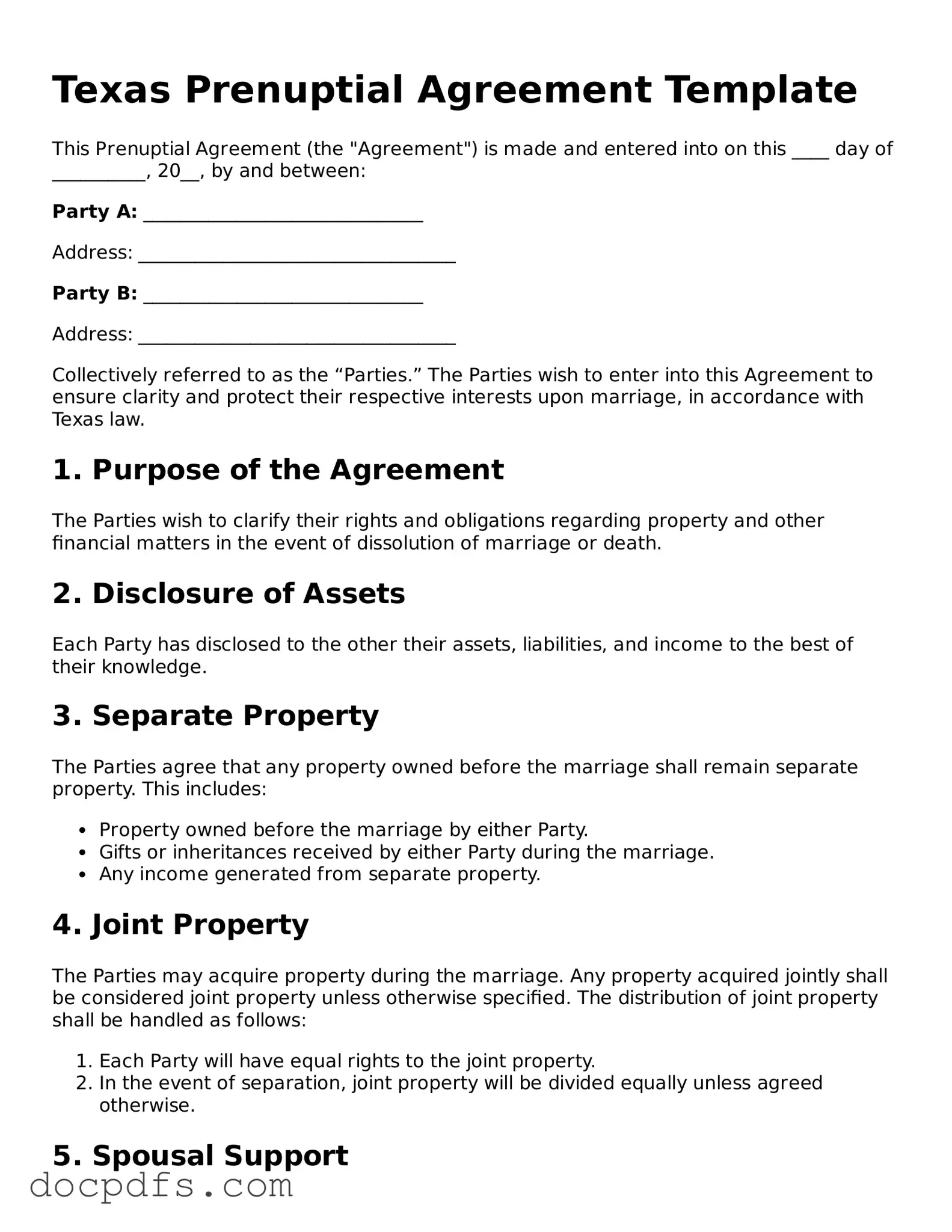What is a prenuptial agreement in Texas?
A prenuptial agreement, often called a prenup, is a legal contract between two individuals before they marry. This agreement outlines how assets and debts will be divided in the event of divorce or separation. In Texas, prenuptial agreements can also address spousal support and other financial matters.
Why should I consider a prenuptial agreement?
Many couples choose to create a prenuptial agreement for several reasons, including:
-
Protection of individual assets acquired before marriage.
-
Clarification of financial responsibilities during the marriage.
-
Prevention of disputes over property division in case of divorce.
-
Ensuring that family heirlooms or businesses remain within the family.
What are the legal requirements for a prenuptial agreement in Texas?
For a prenuptial agreement to be valid in Texas, it must meet certain criteria:
-
It must be in writing and signed by both parties.
-
Both parties should fully disclose their assets and liabilities.
-
The agreement should not be unconscionable or signed under duress.
Can a prenuptial agreement be changed or revoked?
Yes, a prenuptial agreement can be modified or revoked at any time. Both parties must agree to the changes, and any modifications should be documented in writing and signed by both individuals to ensure enforceability.
What can be included in a Texas prenuptial agreement?
In Texas, a prenuptial agreement can include various provisions, such as:
-
Division of property and debts.
-
Spousal support or alimony arrangements.
-
Management of joint finances during the marriage.
-
Provisions for estate planning and inheritance.
Are prenuptial agreements enforceable in Texas?
Yes, prenuptial agreements are generally enforceable in Texas, provided they meet the legal requirements. Courts typically uphold these agreements unless they are found to be unfair or signed under pressure.
How do I start the process of creating a prenuptial agreement?
To begin creating a prenuptial agreement, consider the following steps:
-
Discuss your intentions and concerns with your partner.
-
Gather financial information, including assets and debts.
-
Consult with a qualified attorney who specializes in family law.
-
Draft the agreement, ensuring both parties understand and agree to its terms.
Can a prenuptial agreement address child custody or child support?
No, prenuptial agreements cannot determine child custody or child support arrangements. Texas law requires that these matters be decided based on the best interests of the child at the time of divorce or separation.
What happens if we don’t have a prenuptial agreement?
If a couple does not have a prenuptial agreement, Texas community property laws will govern the division of assets and debts in the event of a divorce. This means that any property acquired during the marriage is typically considered jointly owned and will be divided equally unless otherwise agreed upon.
